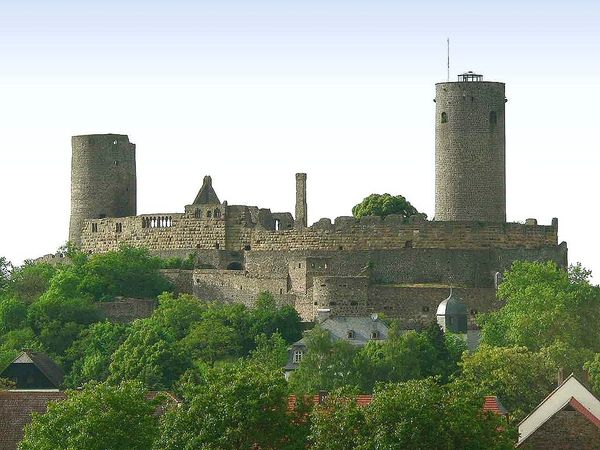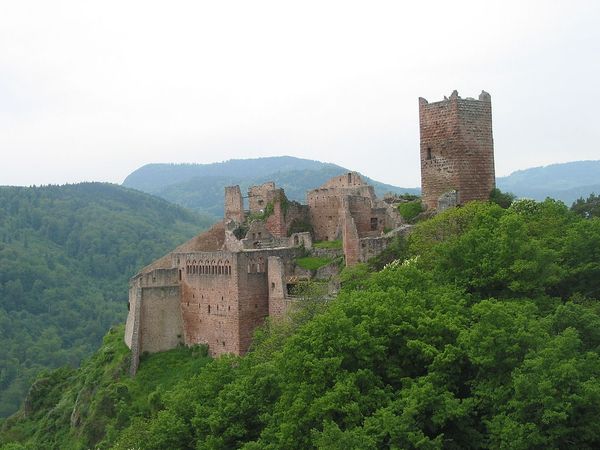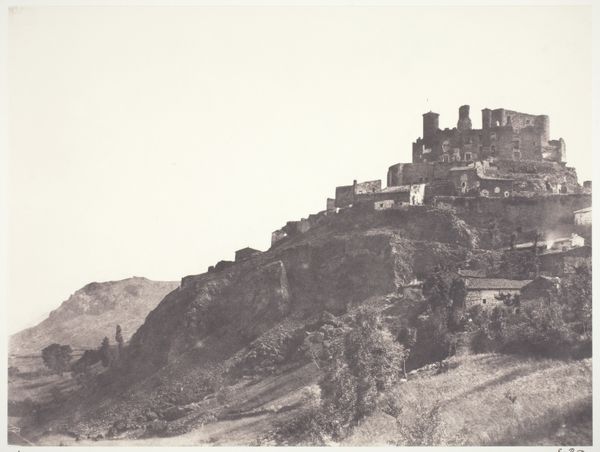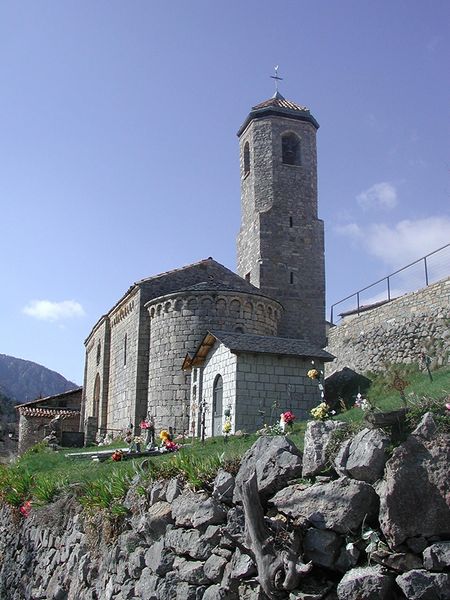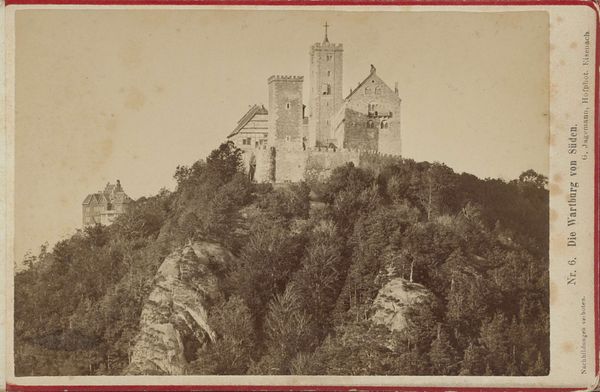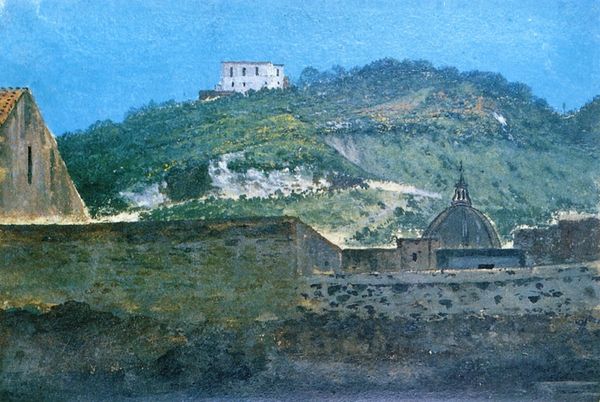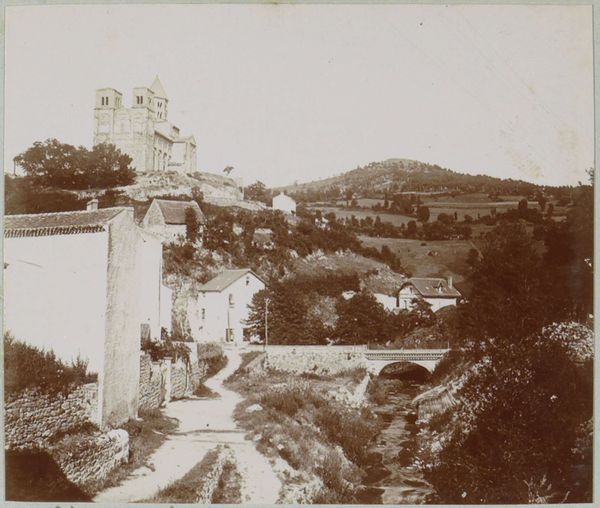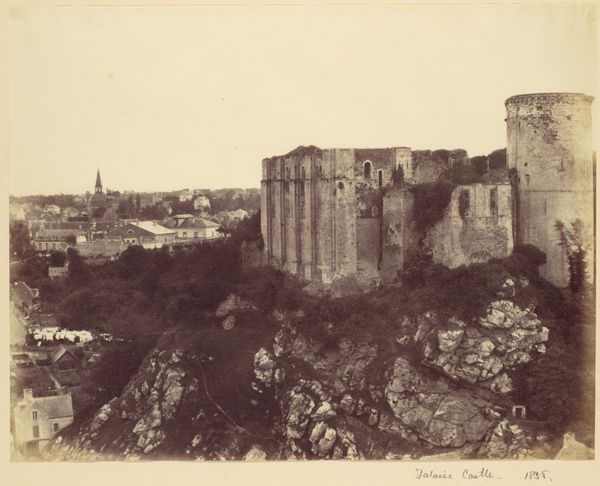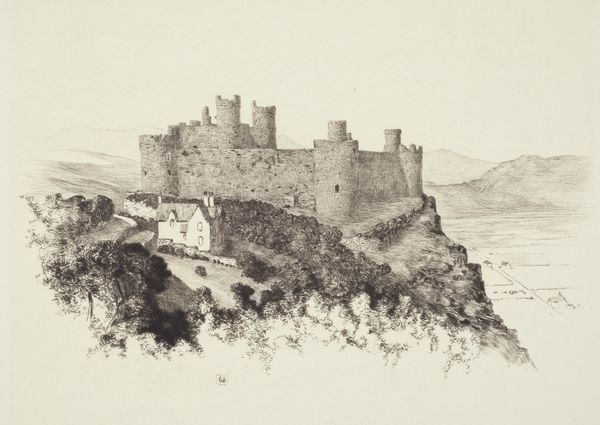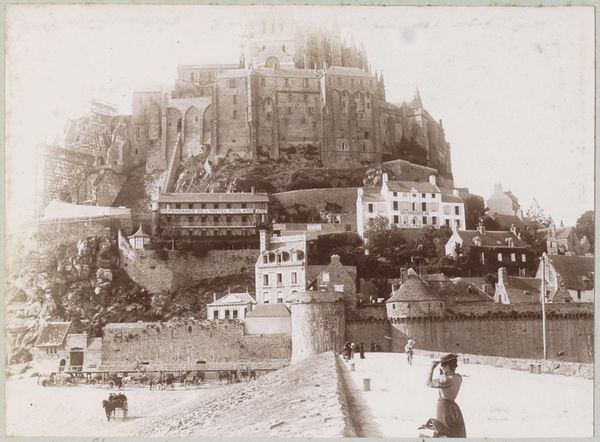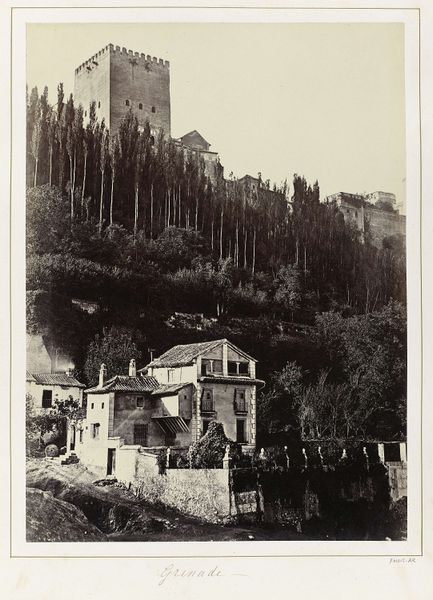
photography, architecture
#
sky
#
medieval
#
landscape
#
photography
#
romanesque
#
architecture
Copyright: Public domain
The Castle of Loarre in Spain, built by Romanesque architects between the 11th and 13th centuries, is largely made of stone, a material that was abundant locally. This wasn’t just a matter of convenience. Stone was chosen for its durability, weight, and the sense of permanence it conveyed. The process of quarrying, transporting, and setting these stones was incredibly labor-intensive. You can imagine teams of workers, likely local peasants, spending years on this project. Their work has imbued the castle with a sense of social significance, reflecting the power and resources of the monarchy. The castle’s solid, geometric forms, the towers and thick walls, communicate a clear message: strength, security, and the ability to endure. Traditional building techniques are evident, but the way the castle integrates with the landscape shows a high degree of aesthetic sensibility, and sophistication. The Castle of Loarre shows us that there’s no real divide between art, craft and design. They are interwoven.
Comments
No comments
Be the first to comment and join the conversation on the ultimate creative platform.

